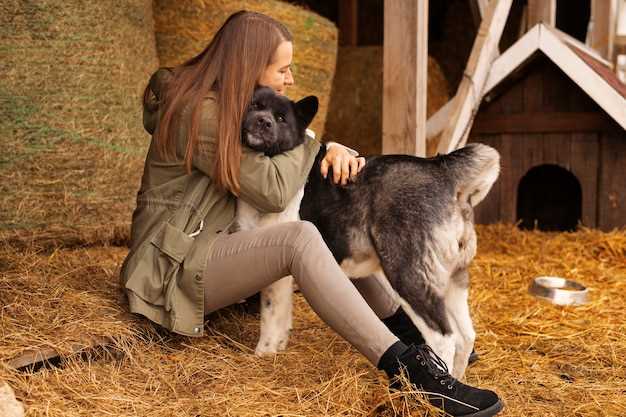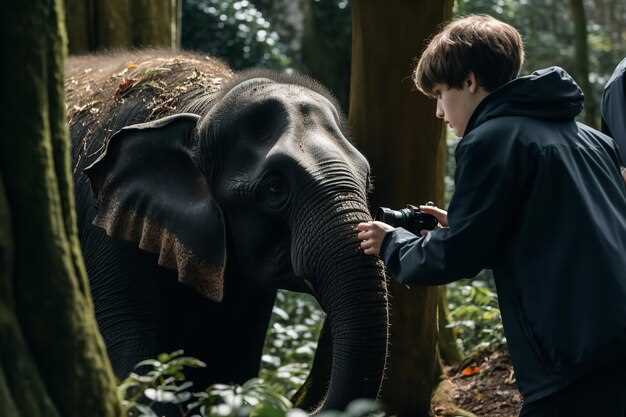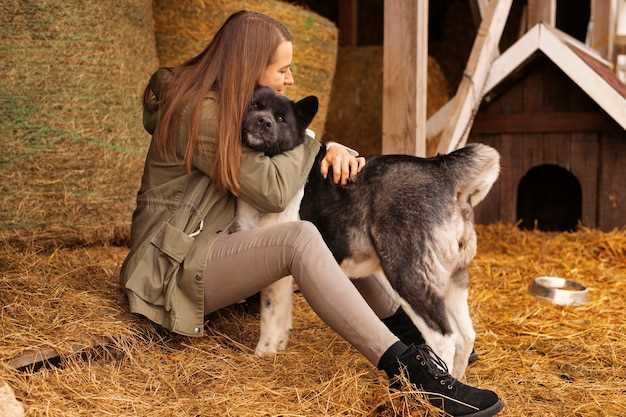
In this captivating exploration, we delve into the fascinating realm of safeguarding and nurturing the diverse creatures that inhabit our planet. Embark on a journey that unveils the tireless efforts dedicated to the well-being and preservation of our animal companions, as well as the vital role played by zoological institutions.
Within the realm of wildlife conservation, a symphony of passionate individuals and organizations harmonize their expertise to protect and sustain the delicate balance of nature. Through a tapestry of innovative strategies and unwavering dedication, these guardians of the animal kingdom strive to ensure the survival and prosperity of countless species.
As we venture into this captivating world, we encounter a tapestry of initiatives that extend far beyond the boundaries of traditional animal care. From groundbreaking research and education to community outreach programs, the scope of these endeavors is as vast as the diverse ecosystems they aim to safeguard.
Prepare to be captivated by the stories of triumph and resilience, as we delve into the heartwarming tales of rehabilitation and release. Witness the transformative power of compassion and commitment as animals once on the brink of extinction are given a second chance to roam freely in their natural habitats.
Enhancing Animal Welfare through Enrichment Programs
Improving the well-being of animals in our care is a top priority at our zoological institution. To achieve this, we have implemented a range of enrichment programs that aim to enhance the physical and mental stimulation of our animal residents. These programs are designed to replicate natural behaviors, promote problem-solving skills, and provide opportunities for social interaction.
Enrichment activities are carefully tailored to the specific needs and preferences of each species, ensuring that they are engaging and beneficial. Through the use of various environmental stimuli, such as puzzle feeders, scent trails, and novel objects, we encourage animals to exhibit their natural instincts and engage in behaviors that promote their overall health and well-being.
Our dedicated team of animal care specialists and behaviorists work closely together to develop and implement these enrichment programs. They continuously assess the effectiveness of the activities and make adjustments as needed to ensure that the animals are receiving the maximum benefit.
| Benefits of Enrichment Programs: |
|---|
| 1. Physical and mental stimulation |
| 2. Replication of natural behaviors |
| 3. Promotion of problem-solving skills |
| 4. Opportunities for social interaction |
| 5. Overall improvement in animal welfare |
By providing our animal residents with enriching experiences, we aim to ensure that they lead fulfilling lives in captivity. These programs not only contribute to their physical and mental well-being but also serve as educational tools for our visitors, highlighting the importance of conservation and the need to protect these incredible creatures and their habitats.
Conservation Breeding Programs: Protecting Endangered Species
Preserving the future of vulnerable wildlife is a paramount concern for conservationists worldwide. To safeguard the existence of endangered species, conservation breeding programs have emerged as a crucial strategy. These initiatives aim to protect and restore populations of at-risk animals by carefully managing their breeding and reintroduction into the wild.
Conservation breeding programs operate on the principle that every individual counts. By carefully selecting genetically diverse individuals, these programs strive to maintain healthy populations and prevent the loss of valuable genetic traits. Through meticulous monitoring and scientific research, experts can identify suitable breeding pairs and ensure the successful reproduction of endangered species.
One of the key components of conservation breeding programs is the establishment of captive breeding facilities. These facilities provide a controlled environment where animals can thrive and reproduce without the threats they face in the wild. By mimicking natural habitats and providing optimal care, these facilities create a safe haven for endangered species, allowing them to breed and increase their numbers.
Another crucial aspect of conservation breeding programs is the reintroduction of captive-bred individuals into their natural habitats. This process involves careful planning and coordination to ensure the successful adaptation and survival of released animals. By reintroducing individuals into protected areas or suitable habitats, conservationists aim to restore self-sustaining populations and reduce the risk of extinction.
Conservation breeding programs also play a vital role in raising public awareness about the importance of wildlife conservation. By showcasing endangered species and their successful breeding efforts, zoos and conservation organizations educate visitors about the threats these animals face and the actions needed to protect them. This awareness can inspire individuals to support conservation efforts and contribute to the preservation of endangered species.
| Benefits of Conservation Breeding Programs: |
|---|
| 1. Preservation of genetic diversity |
| 2. Restoration of endangered populations |
| 3. Protection of valuable genetic traits |
| 4. Creation of safe environments for breeding |
| 5. Reintroduction of captive-bred individuals |
| 6. Public awareness and support for conservation |
The Role of Education in Promoting Wildlife Conservation

Education plays a crucial role in raising awareness and fostering a sense of responsibility towards the conservation of wildlife. By providing knowledge and understanding about the importance of biodiversity and the threats faced by various species, education empowers individuals to take action and make informed decisions to protect and preserve our natural world.
Creating Awareness and Empathy
Education serves as a powerful tool in creating awareness about the diverse range of wildlife species and their habitats. Through educational programs, individuals are exposed to the wonders of the animal kingdom, learning about the unique characteristics and behaviors of different species. This exposure helps to cultivate empathy and a deeper appreciation for the intrinsic value of wildlife, motivating individuals to become advocates for their protection.
Building Sustainable Practices
Education also plays a vital role in promoting sustainable practices that contribute to wildlife conservation. By educating individuals about the impact of human activities on ecosystems, such as habitat destruction, pollution, and climate change, education encourages the adoption of sustainable behaviors. This includes promoting responsible tourism, reducing waste and consumption, supporting ethical wildlife trade practices, and advocating for the preservation of natural habitats.
Furthermore, education equips individuals with the knowledge and skills necessary to actively participate in conservation efforts. By providing information on scientific research, conservation strategies, and the importance of community involvement, education empowers individuals to contribute to wildlife conservation through volunteering, fundraising, and advocacy.
In conclusion, education plays a pivotal role in promoting wildlife conservation by creating awareness, fostering empathy, and encouraging sustainable practices. By equipping individuals with knowledge and empowering them to take action, education is a powerful tool in ensuring the long-term survival and well-being of our precious wildlife.
Veterinary Care: Ensuring the Health and Well-being of Zoo Animals
Providing optimal veterinary care is essential for maintaining the overall health and well-being of the diverse range of animals residing in zoological facilities. The dedicated team of veterinarians and animal care professionals work tirelessly to ensure the physical and mental well-being of the zoo animals, employing various medical techniques and preventive measures to address their unique needs.
Comprehensive Health Assessments
Regular health assessments are conducted to monitor the overall condition of the animals. These assessments involve thorough physical examinations, diagnostic tests, and observations to detect any signs of illness or injury. By identifying potential health issues at an early stage, the veterinary team can intervene promptly and provide appropriate treatment to prevent further complications.
Preventive Medicine and Vaccinations
Preventive medicine plays a crucial role in maintaining the health of zoo animals. Vaccinations are administered to protect against common diseases, while regular parasite control measures are implemented to prevent infestations. Additionally, nutritionally balanced diets are carefully formulated to meet the specific dietary requirements of each species, ensuring their overall well-being.
The veterinary team also collaborates with other experts, such as nutritionists and behaviorists, to develop enrichment programs that promote mental stimulation and natural behaviors. These programs help prevent boredom and stress, contributing to the overall health and happiness of the animals.
- Regular health assessments
- Diagnostic tests and observations
- Early detection and intervention
- Preventive medicine and vaccinations
- Parasite control measures
- Nutritionally balanced diets
- Enrichment programs for mental stimulation
Through the dedicated efforts of the veterinary care team, zoo animals receive the highest standard of medical care, ensuring their health and well-being are prioritized. By providing comprehensive health assessments, preventive medicine, and enrichment programs, zoos continue to play a vital role in the conservation and preservation of endangered species.
Sustainable Practices: Reducing the Environmental Impact of Zoos
Implementing sustainable practices is crucial for zoos to minimize their ecological footprint and mitigate the environmental impact of their operations. By adopting environmentally-friendly strategies, zoos can contribute to the conservation of biodiversity and promote a more sustainable future for both animals and humans.
One key aspect of reducing the environmental impact of zoos is the efficient management of resources. This involves implementing measures to minimize water and energy consumption, such as installing water-saving fixtures and utilizing renewable energy sources. By reducing their reliance on non-renewable resources, zoos can decrease their carbon footprint and contribute to the overall reduction of greenhouse gas emissions.
Another important sustainable practice is waste management. Zoos can implement recycling programs, composting initiatives, and proper waste disposal systems to minimize the amount of waste sent to landfills. Additionally, zoos can explore innovative solutions, such as converting animal waste into biogas or using it as fertilizer for on-site gardens, promoting a circular economy and reducing the need for external resources.
Furthermore, zoos can play a significant role in conservation efforts by prioritizing sustainable sourcing and responsible procurement. This involves ensuring that the food provided to animals is sourced from sustainable and ethical suppliers, minimizing the ecological impact of the supply chain. By supporting local and organic producers, zoos can contribute to the preservation of biodiversity and promote sustainable agricultural practices.
In addition to these practices, zoos can also focus on creating educational programs and initiatives to raise awareness among visitors about the importance of sustainability and environmental conservation. By engaging the public and promoting responsible behavior, zoos can inspire individuals to make sustainable choices in their daily lives and become advocates for environmental protection.
| Benefits of Sustainable Practices in Zoos |
|---|
| 1. Reduction of carbon footprint |
| 2. Conservation of natural resources |
| 3. Preservation of biodiversity |
| 4. Promotion of sustainable agriculture |
| 5. Education and awareness for visitors |
Collaborative Efforts: Partnerships for Global Conservation Initiatives
In the realm of animal welfare and environmental preservation, it is imperative to recognize the significance of collaborative efforts and partnerships in driving global conservation initiatives. By fostering alliances and working together, organizations and individuals can amplify their impact and create a more sustainable future for our planet.
Through strategic collaborations, diverse stakeholders from various sectors, such as governmental bodies, non-profit organizations, research institutions, and local communities, can pool their resources, expertise, and knowledge to address pressing conservation challenges. These partnerships enable the development and implementation of innovative strategies, research projects, and conservation programs that aim to protect and restore biodiversity, mitigate habitat loss, combat wildlife trafficking, and promote sustainable practices.
Strong partnerships also facilitate the sharing of best practices, lessons learned, and scientific advancements across borders and continents. By fostering international cooperation, conservation initiatives can transcend geographical boundaries and tackle global issues that require collective action. Collaborative efforts allow for the exchange of ideas, technologies, and methodologies, fostering a culture of learning and continuous improvement.
Moreover, partnerships play a crucial role in raising awareness and mobilizing public support for conservation efforts. By joining forces, organizations can leverage their collective influence to advocate for policy changes, promote responsible consumption, and educate communities about the importance of wildlife conservation. Collaborative campaigns and outreach initiatives can inspire individuals to take action, fostering a sense of stewardship and empowering them to contribute to conservation efforts in their own communities.
In conclusion, collaborative efforts and partnerships are essential for driving global conservation initiatives. By uniting diverse stakeholders, sharing knowledge and resources, and mobilizing public support, these partnerships can make a significant difference in safeguarding our planet’s biodiversity and ensuring a sustainable future for generations to come.

